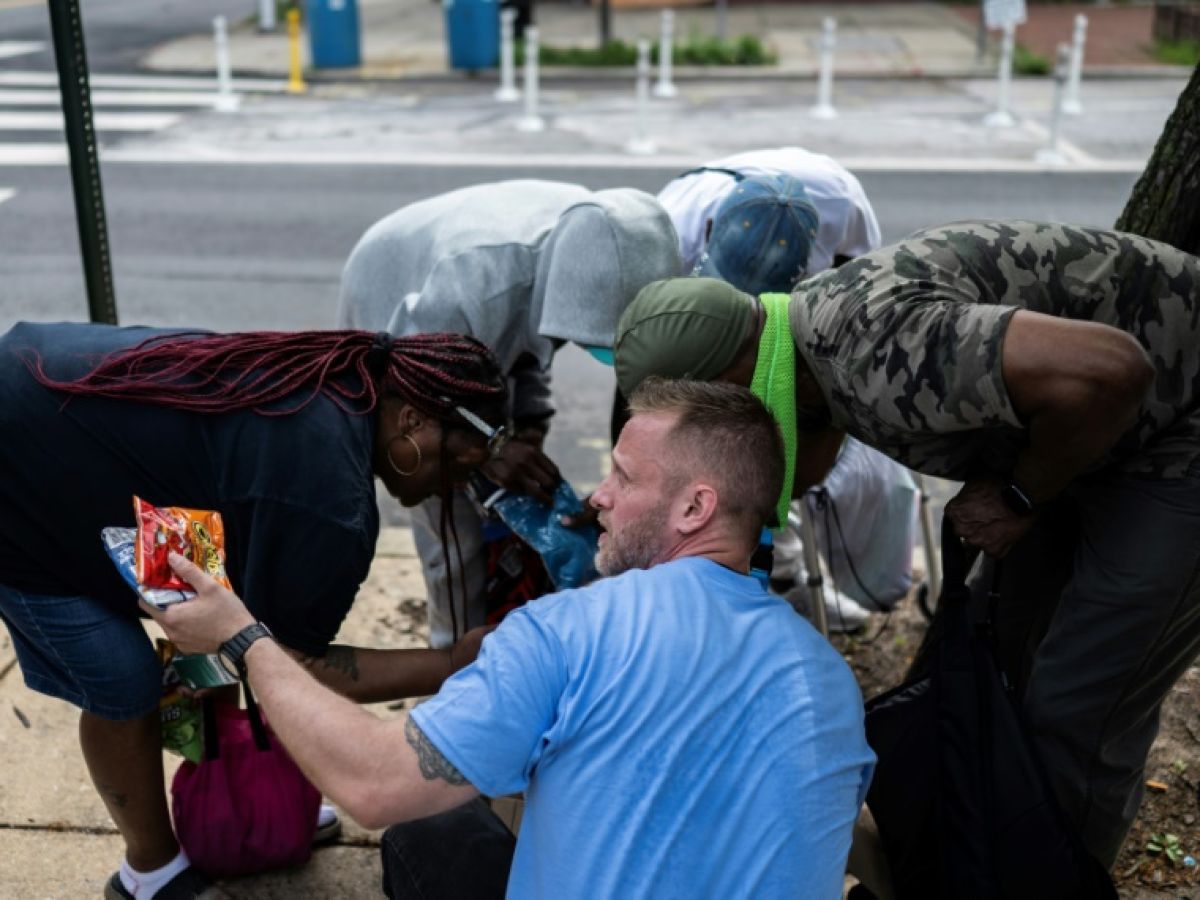Adam Trionfo walks the red-brick streets of Baltimore carrying a bag filled with boxes of Narcan, the brand name for naloxone, a drug that quickly reverses the effects of an overdose.
With his team, the forty-year-old travels to neighborhoods considered to be drug trafficking "hotspots" to distribute the precious antidote, which has become a cornerstone in the fight against the opioid crisis, which caused approximately 750,000 deaths in the United States between the end of the 1990s and 2022.
"Just last week, we gave away 200 boxes," Trionfo, who oversees a drug addiction program at the local branch of Catholic Charities, told AFP.
During their patrol, the team - which also offers food and hygiene products - spots a man sprawled in the middle of a pile of rubbish, in the corner of a staircase.
One of the members hands him a box of Narcan and a flyer from the organization. The man grabs them with one hand, clumsily hiding a syringe behind his back.
The last copy of this medicine, which comes in the form of an easy-to-use nasal spray, is given away a little further on, at the foot of a dilapidated building, to a man whose legs are covered in brown scars.
These are familiar scenes in this East Coast city, located about fifty kilometers from Washington and which has a sinister reputation: plagued by endemic crime, highlighted in the 2000s by the cult series "The Wire", it was awarded the unenviable title of "American overdose capital" by the New York Times in 2024.
Between 2018 and 2022, the death rate from drug use, led by fentanyl, was nearly twice as high as in any other major American city. According to the newspaper, it peaked at nearly 200 deaths per 100,000 residents in 2021, at the height of the opioid crisis.
– “Considerable efforts” –

But the horizon has since cleared, as it has almost everywhere else in the country.
The number of fatal overdoses in Baltimore fell by 351 points last year, from 1,043 in 2023 to 680 in 2024.
This is the result, in particular, of a proactive policy implemented by the city and the prevention work of organizations such as Catholic Charities.
"There's been a huge effort across the city to get people into treatment and to make naloxone widely available," said Michael Fingerhood, chief of addiction medicine at Johns Hopkins Bayview Medical Center in Baltimore.
Distributed on a large scale for about ten years, Narcan has had the effect of a "fire extinguisher," he emphasizes.
In Baltimore, it's now found everywhere: in pharmacies, in vending machines installed throughout the city, and even in libraries.
– Restitution Fund –

The drop in the number of overdoses is also linked, according to Dr. Fingerhood, to a change in the composition of drugs observed in recent years.
These "contain less potent fentanyl and additives that are less likely to cause an overdose," he explains.
Awareness of the risks associated with this powerful synthetic opioid has also increased among users, pushing them to be more "cautious," notes Bakari Atiba, manager at Charm City Care Connection.
The local organization, which runs a drug addiction center, recently received money from a restitution fund funded by the city's lawsuits against opioid manufacturers and distributors.
This gives us reason to look to the future with "optimism," according to Bakari Atiba, even if "it does not mean that people will stop using drugs."
"That's not even our goal," he says.
“It’s about meeting people where they are, making sure they’re safe, they’re supported, and they have possible paths to healing if they want them,” Atiba said.

